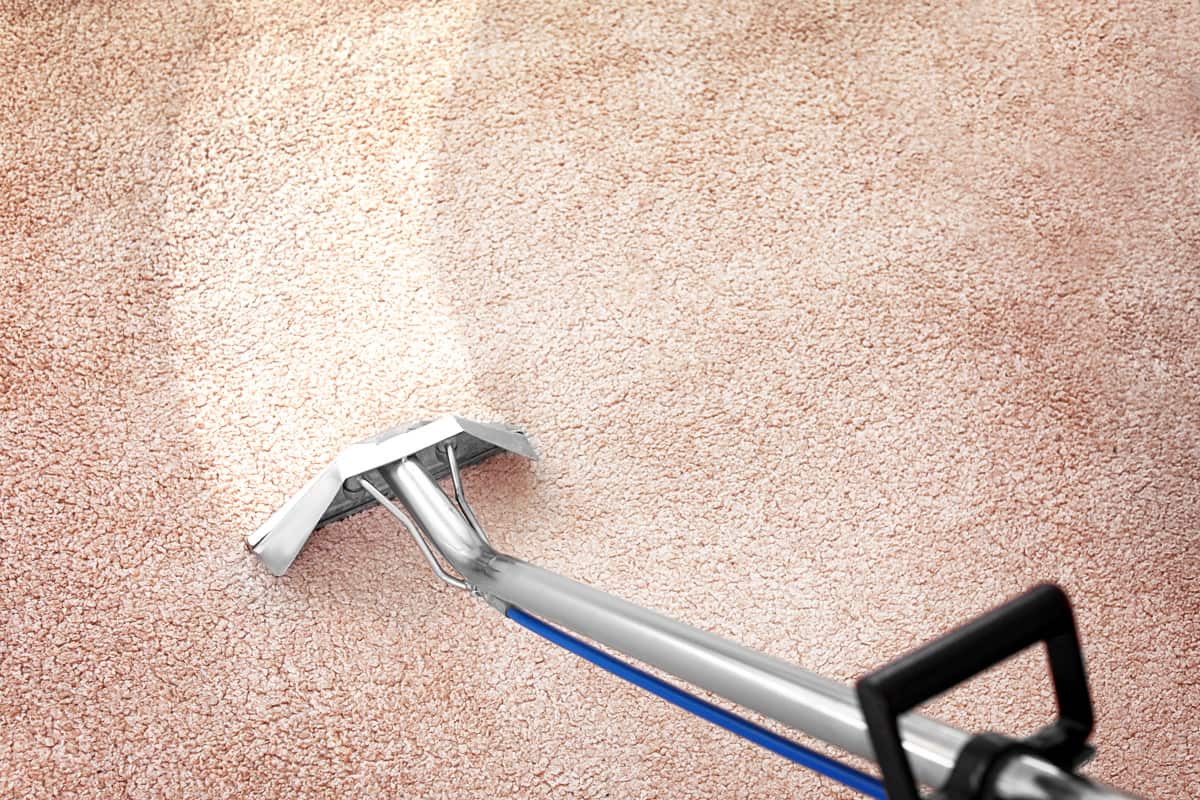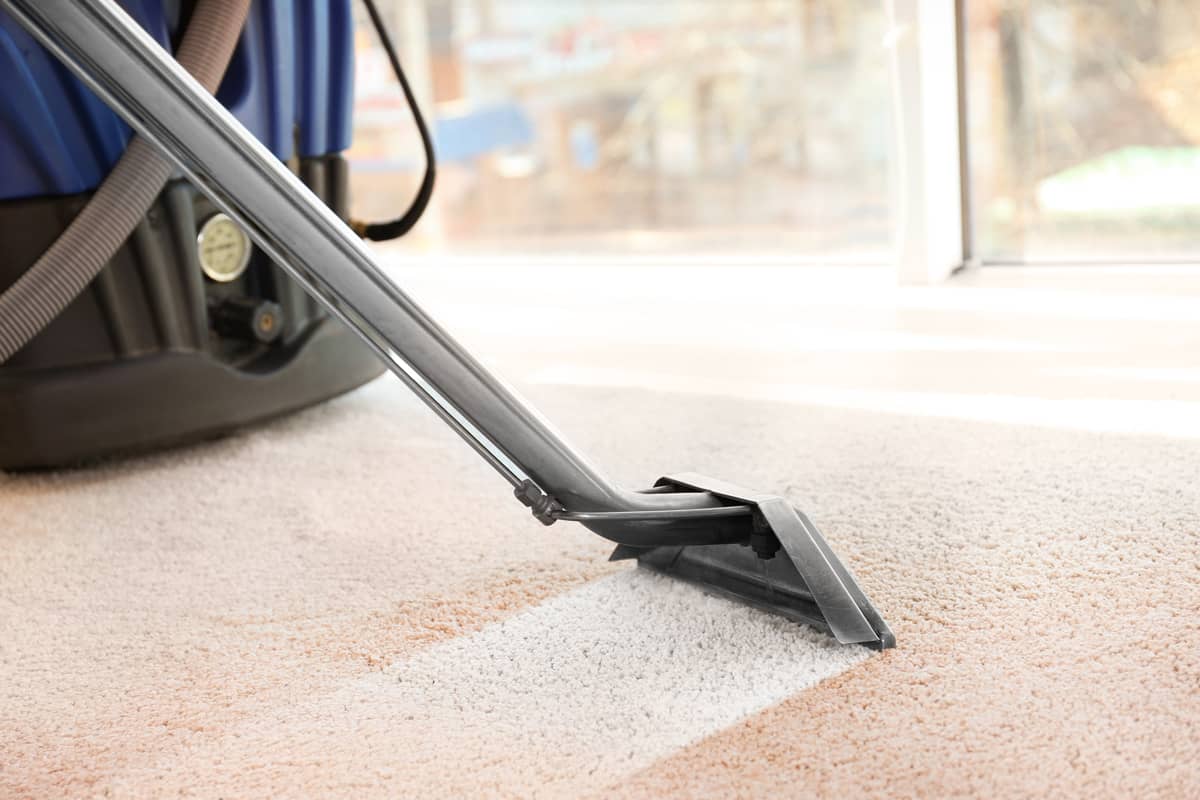There's a crucial need for sanitization in recent times. Steam cleaning is one way to do that. However, how long would you need to use it to kill bacteria? If that's your concern, we have the details!
To know how long we'll have to use steam, we'll need to know a few more details. Bacteria stops multiplying at temperatures between 140 to 160 degrees Fahrenheit.
Above 212 degrees, they will die quickly. Steam cleaners can get as hot as 325 degrees Fahrenheit. Thus, it wouldn't take longer than a few minutes.
Of course, it's hard to explain all the details concisely. It's a topic that requires more time to get a complete understanding. Although steam can help kill bacteria, you need to use it correctly.
If you have any more concerns, keep reading. We'll discuss more on this topic.

Bacteria and Heat
It's a surprise to no one that heat kills bacteria. However, it has to be high enough to have an effect. Bacteria are resilient. They can handle temperatures we can't.
For example, the hot water from the tap isn't high enough to kill all bacteria. Instead, it will slow down their growth. Generally, the temperature of the water from the tap is 120-140 degrees Fahrenheit.
Some bacteria can survive it, but it's unlikely. Temperatures upwards of 140 are enough to burn us in a few minutes. To ensure bacteria die, you need temperatures of 140 or higher.
At this point, most bacteria will stop multiplying. After a few minutes of contact, it will kill most of it. It raises the question, how hot do steam cleaners get?

How Hot Do Steam Cleaners Get?
As the name implies, steam cleaners use steam to sanitize various surfaces. But how do you get a machine to produce steam? You have to heat water past the boiling point.
The boiling point for water is 212 degrees Fahrenheit. This machine forces water out as pressurized steam through a nozzle. Some manufacturers even claim it can get as hot as 300 degrees Fahrenheit.
Manufacturers like Sargent Steam claim their steam cleaners can kill coronavirus in two seconds. As we can see, it's way above the requirement to kill bacteria.

If a steam cleaner at 300 degrees can kill coronavirus in two seconds of contact, we can assume it will take longer for steam cleaners that operate at the boiling point.
Thus, you'd have to steam clean a surface for around 1-5 minutes of constant contact to kill bacteria. Generally, at least three minutes of sustained contact should do the job.
The Downside Of Steam Cleaning
Of course, it's normal to want to play it safe. Some people argue you would need to hold steam near a surface for at least 10 minutes for it to be effective.
It seems like a bit of overkill. That's because it is. Most bacteria and viruses should not survive longer than 10 minutes in temperatures higher than 160 degrees.
One study found that you can kill coronavirus in three minutes at temperatures above 160 degrees Fahrenheit. Though, there's a problem with using steam cleaners to kill bacteria.
Unfortunately, the temperatures that steam cleaners operate at can damage surfaces you want to sanitize.
Areas To Avoid Steam Cleaning
Now we have a better understanding of the topic. As we've learned, heat can kill bacteria. However, it needs to be high enough to be effective.
Temperatures above 160 degrees should do the job. Steam cleaners can get hotter than that. Though, that's where our next problem lies.
Temperatures higher than 160 degrees do more than kill bacteria. It also damages various materials. Wall or furniture finished in water-based paint can't handle this heat.
Floors without a sealant also don't fare well. You should also avoid steam cleaning surfaces with a high-temperature difference, like windows. Otherwise, the combination of hot and cold can be enough to crack the glass.
Of course, you can do it and come out successful. But do keep in mind that you run the risk of damaging the material.
Areas You Can Steam Clean
If you want to steam clean your floors, ensure they are sealed. Other areas you can use steam for sanitization are:
- Carpets
- Mattresses
- Upholstery
- Showers
- Ovens
- Stove tops
- Grills
- Sinks
- Tubs
- Backsplashes
- Toilets
Where Does the Dirt Go When Steam Cleaning?

Although it has cleaning in its name, it doesn't do much cleaning by itself. It can kill bacteria, dust mites, viruses, etc. But, the grime lingering on surfaces won't move.
For this reason, it's also good to follow it up with a broom, cloth, or vacuum. The dirt doesn't go anywhere. However, steam makes it much easier to remove.
You can't rely on one tool to do everything. It's a detail to keep in mind if you think it will do more than it should.
Can I Put Vinegar in My Steam Cleaner?
Steam cleaners work by heating water at the boiling point. Some can heat it at a higher temperature. Though, some may want to use a natural disinfectant with it.
If we can mix the best of both worlds, why not try? Vinegar is one product many homeowners love to use as a disinfectant. However, you might want to be cautious before you load it into your steamer.
Look at the owner's manual to confirm you can use it with the machine. Otherwise, it can be risky. Generally, most manufacturers would recommend using only water with a steamer.
If you decide to use vinegar with a steam cleaner despite no mentions in the owner's manual, don't use too much of it. A 50/50 solution of water and vinegar should do fine.
Choose the Right Kind Of Water
Another detail to keep in mind is the kind of water you use. The water from your tap might seem like a good idea. But, tap water contains minerals.
When your steam cleaner boils the water, those minerals will linger inside. Over time, it might not continue to work. Of course, that's unless you routinely remove the mineral deposit inside the cleaner.
It's a problem not to take too lightly because it will build up all over the machine. Minerals can even clog the nozzle. For this reason, the best water to use in one would be distilled water.
Can I Put Pine Sol in My Steam Mop?
One of the advantages of standard mopping is the pleasant fragrances cleaners leave behind. Pine Sol is one that many love to use. However, it's not advisable to use it in a steam cleaner.
Even Pine Sol recommends not filling your steam cleaner's tank with it. If the product wasn't made for steam cleaning, you shouldn't use it in one.
How To Descale A Steam Cleaner
It makes sense to use the water already available to you. If you use tap water in a steamer, make sure to descale the machine once in a while. Fortunately, it's an easy task to add to any cleaning routine.
Fill the tank with 1/3 of white vinegar. Then, fill the rest with 2/3 of distilled water. Leave the steamer running until half of the tank remains.
Dump out the remaining mixture and leave the steamer sitting for 30 minutes. Repeat the process two or three more times. The steamer should work as normal afterward.
Is Steaming Floors Better Than Mopping?

Steaming floors should be better than standard mopping because it does more than wipe away grime. Steam is a natural sanitizer. So, you'd be effectively killing anything harmful on the floor.
The heating aspect of it makes it more sanitary than mopping. That's not to mention that it can make easy work of stubborn grime on the floor. You wouldn't have to put much effort into steam cleaning than you would a mop.
Steam cleaning also takes away the need for chemical cleaners. Therefore, it's more kid and pet safe. They dry relatively quickly too. So, there would be no worry about slipping.
The only advantages mops have over steam mops are affordability and ease of use. You don't need access to a battery or electricity to operate a mop.
Additionally, it's more of a hassle to deal with cords for steam cleaners that aren't portable.
Does Steam Cleaning Remove Odors?
It isn't enough to wipe away the filth. Some debris may leave an odor. Of course, you can use a fragrance to try and cover it. But, that won't solve the problem.
That's where steam can come into play. Steam permeates deep. It's good enough to remove stains on carpeting. Therefore, it would also do well enough to remove odors.
It does this by removing the source of the odor. For this reason, steam is the way to go for various cleaning needs.
In Closing

It's always good to read up on something before using it. As we've found, steam cleaners are effective at killing bacteria. It doesn't take much time to do it either. We hope you found this informative. Good luck with the sanitizing!
Before you go, do you have other steam cleaning concerns? Do you want to use a steam cleaner to clean floor grout? To learn more, check out:
Do Steam Cleaners Clean Floor Grout?
Do you want more details on steam cleaning carpets? For more information on this topic, check out:
